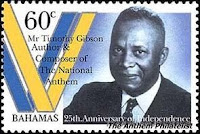The Panama National Anthem

Panama is an isthmus (a narrow strip of land enclosed by water on two sides), and it's anthem is entitled, appropriately, "Himno Istemño". The anthem was first performed by citizens in the streets on the day of independence in 1903, and was fully adopted as an anthem in 1925. Santos Amatriaim Jorge (1870 - 1941), composed the music for the Panamanian national anthem "Himno Istmeno". He was born in Peralta, Navarre, Spain in November 1870. After studying music at the Conservatorio de Madrid, he moved to the Isthmus of Panama in 1889 where he taught music. In 1892, he became the director of the military band of the Colombia Battalion. The lyrics of the Panamanian national anthem were written by Jeronimo de la Ossa . He was born in Panama City on April 9,1847 and died there in 1907. He was a romantic poet who studied civil engineering in Chile. He later represented the Panamanian consulate in Chile and worked for the France Canal Company. ...



















